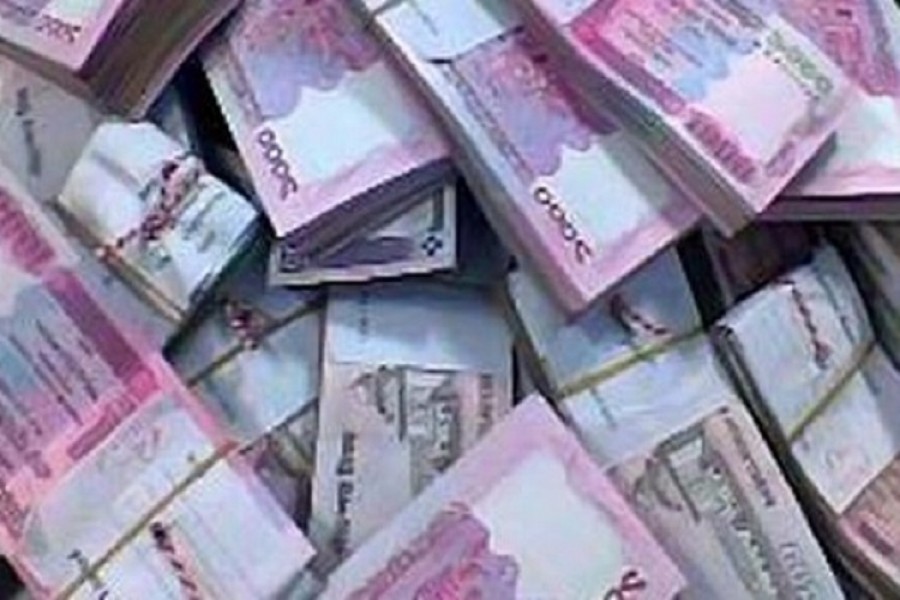Bangladesh's broad money growth dropped in significant volume in the past financial year for what economists view a deflated investment demand both in public and private sectors.
Such low money-supply growth, they think, surely had impacted the country's economic growth.
Broad money or M2, a broad measure of money supply that covers cash in circulation and all deposits, expanded just by 10.88 per cent or Tk 996.98 billion in 2016-17 against 16.35 per cent or Tk 1.29 trillion in 2015-16.
This broad money growth in the last financial year was 4.62 percentage points lower than target, marking a new low at 10.54 per cent over the same period in 2016.
However, other financing data like reserve money remained robust over 16 per cent in the year under review.
The central bank said M2 growth was, again, slower in the first month of the current fiscal year than the corresponding period of the previous fiscal due mainly to lower demand for funds from the public sector. But private-sector credit growth also remained low in comparison with 2015-16. Private credits recorded 15.66 per cent growth in 2016-17, lower than 16.78 per cent in the previous fiscal year.
Economists view that the supply side of money was quite okay but the demand side was the worst in the past year, leading to a sharp fall in the growth of the broad money.
Dr Zahid Hussain, lead economist at the World Bank Dhaka office, said this is due to low appetite for credits especially from the government side.
Lending rates have decelerated in recent years alongside the deposit rates following adequate liquidity with the banking system. Such low rates should have grown the private investment. But the credit to the private sector is also not getting a boost, rather remained lower than that of the previous year.
Dr Hussain sees a possible indirect impact of foreign borrowing by the private corporate houses.
"The demand for loans from the domestic sources remained low as many are borrowing from overseas sources," he said.
The foreign borrowing still remained cheap against the domestic borrowing.
However, the components of broad money -- net foreign asset (NFA) and net domestic asset (NDA) -- registered 14.10 per cent and 9.78 per cent growth respectively in 2016-17.
But NDA remained much lower than the target of over 17 per cent for up to June 30 last. On the other hand, the NFA was higher than the target of 10 per cent.
However, many economists opine that NFA had more robust growth than that of the last financial year.
Dr Ahsan H Mansur, executive director at the Policy Research Institute of Bangladesh (PRI), said if the NDA remained along the target, then this would create trouble for the GDP.
"If you find a low NDA, then there is positive relationship between the GDP and the NDA," Dr Mansur said.
The policy analyst, however, thinks this low broad money helped keep the inflation at low level.
Dr Mirza Azizul Islam, a former caretaker government adviser on finance, told the FE that poor investment in the private sector is one of the key reasons behind the poor growth of the M2.
"The private investment is yet to pick up despite fall in the lending rates and adequate idle money with the banking sector."
Dr Islam was critical of higher borrowing by government from the non-banking sources, arguing that this is squeezing the spaces of development as the government has been paying much for the payment of profit.
In the meantime, the central bank in its latest monetary policy statement for July-December has set a low M2 target at just 13.9 per cent up to June 2018.
There are many empirical findings that there is relationship between broad money and the rate of inflation if the former rises later in the same direction.
There are also many studies showing relationship between the GDP and the broad money.
Theoretical analysis between GDP and M2 indicates that the change in M2 will lead to a change in GDP.
A research note, applied for Bangladesh and other Asian countries, shows that M2 supply, fiscal deficit, government expenditure and interest rate are positively correlated with inflation.


